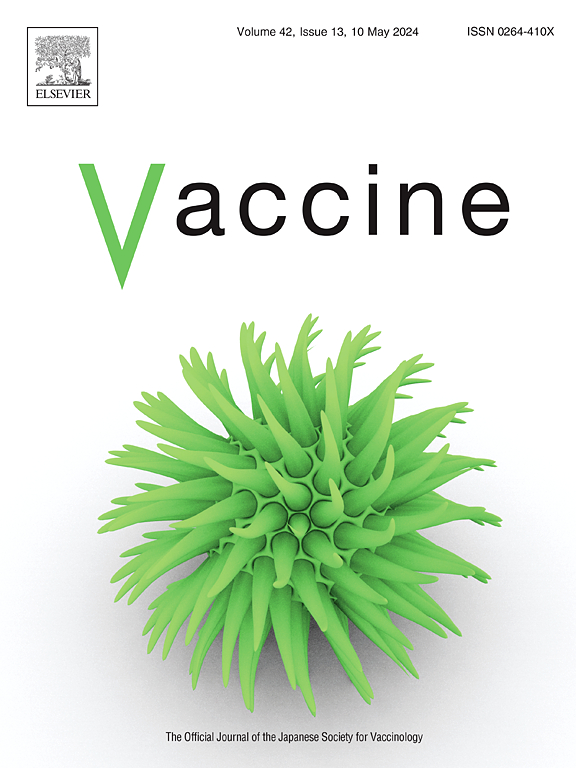COVID-19 serological survey utilizing antenatal serum samples in British Columbia
IF 4.5
3区 医学
Q2 IMMUNOLOGY
引用次数: 0
Abstract
The COVID-19 pandemic, caused by SARS-CoV-2, highlighted the need for accurate and timely data on virus spread and immune responses at a population level. Serological surveys offer a comprehensive view of population-level immune response to SARS-CoV-2 post- infection and/or vaccination. Here, we performed a serial cross-sectional study from residual serum samples collected from pregnant individuals in British Columbia during their first trimester antenatal screening. A total of 28,050 samples were collected between November 2021 and March 2024. We tracked changes in antibody levels over time and examined differences in antibody responses based on age and vaccination status during different phases of the pandemic. Antenatal serum samples enabled tracking of SARS-CoV-2 serostatus within the population and waves of major SARS-CoV-2 infections, such as the Omicron surge in 2021–2022 and increases in infection during the 2023–2024 respiratory season. During the 2023–2024 season, we observed a significant rise in Nucleocapsid (N) seropositivity compared to the previous year, reaching 64.3 % in the vaccinated group and 67.05 % in the unvaccinated group. This suggests a high infection rate, likely driven by the latest Omicron variants. Additionally, we differentiated between infection-induced and vaccine-induced seroprevalence. By March 2024, Spike (S) seroprevalence was 94 % in the unvaccinated group and 100 % in the vaccinated group. We assessed the longevity of vaccine-induced antibody within the population. A significant negative correlation was observed between S seropositivity (indicative of vaccination without infection, S+/N-) and time since the last vaccine dose. In contrast, anti-N levels began to rise above the cut-off value of seropositivity 15 months post-vaccination, indicating increased infection rates and N seroprevalence as time post-vaccination increased. This serosurveillance approach provide critical insights for public health strategies for the future, emphasizing the importance of ongoing serosurveillance to help understand corelates of seroprotection at a population level and to support ongoing evidence-based vaccine policy.
利用产前血清样本在不列颠哥伦比亚省进行COVID-19血清学调查
由SARS-CoV-2引起的COVID-19大流行突出表明,需要在人群层面上获得准确和及时的病毒传播和免疫反应数据。血清学调查提供了对SARS-CoV-2感染后和/或疫苗接种的人群水平免疫反应的全面看法。在这里,我们从不列颠哥伦比亚省妊娠早期产前筛查期间收集的孕妇残留血清样本进行了一系列横断面研究。在2021年11月至2024年3月期间共收集了28,050份样本。我们跟踪了抗体水平随时间的变化,并检查了在大流行的不同阶段,基于年龄和疫苗接种状况的抗体反应的差异。产前血清样本可以跟踪人群中的SARS-CoV-2血清状态和主要SARS-CoV-2感染的浪潮,例如2021-2022年的Omicron激增和2023-2024年呼吸季节的感染增加。在2023-2024年季节,我们观察到与前一年相比,核衣壳(N)血清阳性显著上升,接种组达到64.3%,未接种组达到67.05%。这表明很高的感染率,可能是由最新的欧米克隆变种驱动的。此外,我们区分了感染诱导和疫苗诱导的血清阳性率。到2024年3月,未接种疫苗组的Spike (S)血清阳性率为94%,接种疫苗组为100%。我们评估了疫苗诱导抗体在人群中的寿命。S血清阳性(表明未感染疫苗接种,S+/N-)与最后一次疫苗剂量后的时间呈显著负相关。相比之下,接种疫苗后15个月,抗N水平开始上升到血清阳性的临界值以上,表明随着接种疫苗后时间的增加,感染率和N血清阳性率增加。这种血清监测方法为未来的公共卫生战略提供了重要见解,强调了持续的血清监测的重要性,有助于了解人群水平上血清保护的相互关系,并支持正在进行的循证疫苗政策。
本文章由计算机程序翻译,如有差异,请以英文原文为准。
求助全文
约1分钟内获得全文
求助全文
来源期刊

Vaccine
医学-免疫学
CiteScore
8.70
自引率
5.50%
发文量
992
审稿时长
131 days
期刊介绍:
Vaccine is unique in publishing the highest quality science across all disciplines relevant to the field of vaccinology - all original article submissions across basic and clinical research, vaccine manufacturing, history, public policy, behavioral science and ethics, social sciences, safety, and many other related areas are welcomed. The submission categories as given in the Guide for Authors indicate where we receive the most papers. Papers outside these major areas are also welcome and authors are encouraged to contact us with specific questions.
 求助内容:
求助内容: 应助结果提醒方式:
应助结果提醒方式:


